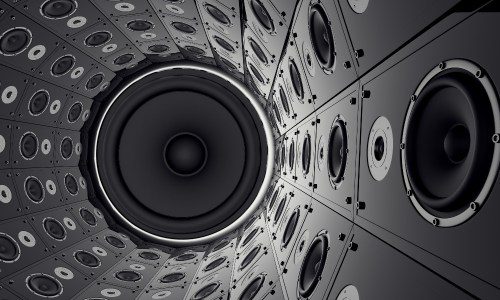The modern world is multi-dimensional. Consumers can operate 3D smartphones, watch 3D movies and even design and create using 3D printing. 3D audio, however, is still on the outskirts of the market. The interest from consumers exists — they crave touch and visceral experiences. The value of voice is unmistakable, so it won’t be long until 3D audio enters the scene.
Most of the audio that gets played back is 2D, which results in a flat sound. Computing power today is strong enough to power 3D audio, which creates the same impression you achieve when you’re at a concert where you can feel the music not just playing back in front of you but all around you.
3D audio also has a diverse range of applications in spaces like gaming technology. Gamers want to feel like they are immersed in the world of their characters, and 3D audio, when coupled with advanced graphics, can make a player feel surrounded by the virtual environment rather than just experience sound playing directly back from a speaker.
There’s also automotive technology, where speech drivers exist in every part of a car, which means a passenger and listener can feel that they are at the center of the sound while in their vehicle. Similarly, 3D audio is used in microphone design enables mics to effectively capture commands and preferences for users of all types by incorporating input from multiple directions, voice inflection and more.
3D audio will also play a bigger role in evolving the workplace. Think about conference calling: though an effective form of communication, it does not deliver the same feeling of being in a room with others, so companies like Harman are developing a system that gives users the same feeling from listening to a device as being in a shared space with someone. Removing the need to travel to have visceral human-to-human interaction is a potential benefit of 3D audio.
3D Audio Is Not Without Its Challenges
3D audio confronts many challenges. Still today, conference phone systems are not at the point of creating a surround sound, “sharing a space” kind of effect for users. Additionally, having speakers in a room, no matter how sophisticated, does not mimic the sounds in nature.
Some challenges for 3D Audio include:
- The number of speakers necessary to make 3D audio realistic.
- Specific locations of speakers.
- Capturing 3D audio from opposite ends of conference calls.
- Processing individual speakers through the hardware.
Among the advancements in audio tech that are changing the way listeners take in sound is personalization. for example, Harman’s Personi-Fi technology offers a one-of-a-kind listening experience designed exactly to a user’s preferences on any device and in every environment. How this works is by adjusting a device’s sound curve to the hearing preference of a given user so that, when you listen on your headphones or in your car, the sound is set to your preference and adjusted to best suit your hearing needs.
This technology applies to certain health technologies like hearing aids, too. Humans don’t tend to check their hearing regularly– people regularly visit the doctor, eye doctor, and dentist, but how often do you go to the audiologist? Looking ahead, the listening experience should be catered to listeners’ unique needs and preferences, and 3D audio can help get us there.
Modern consumers are used to a tailored experience, from targeted advertising to personalized shopping. Looking ahead to the new decade, where personalization will continue to increase and remote workforces are in need of teleconferencing tech, expect to see more from 3D audio in new technology.
Nik Rathod is the senior global product line manager at Harman Embedded Audio.







